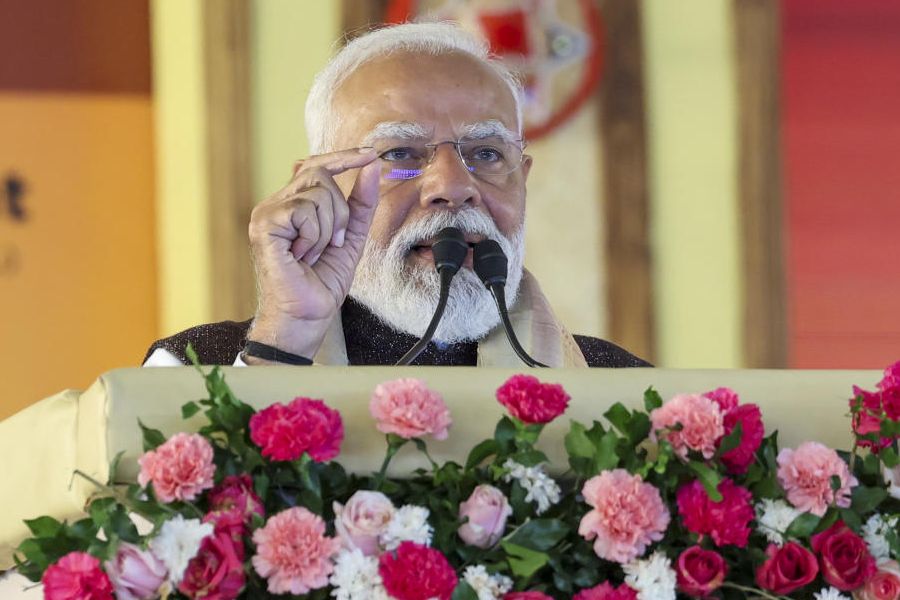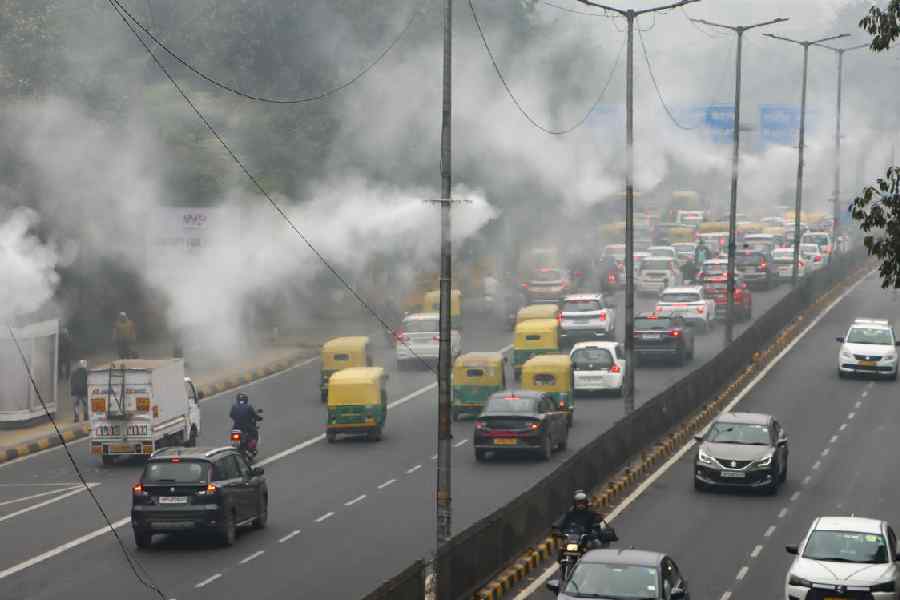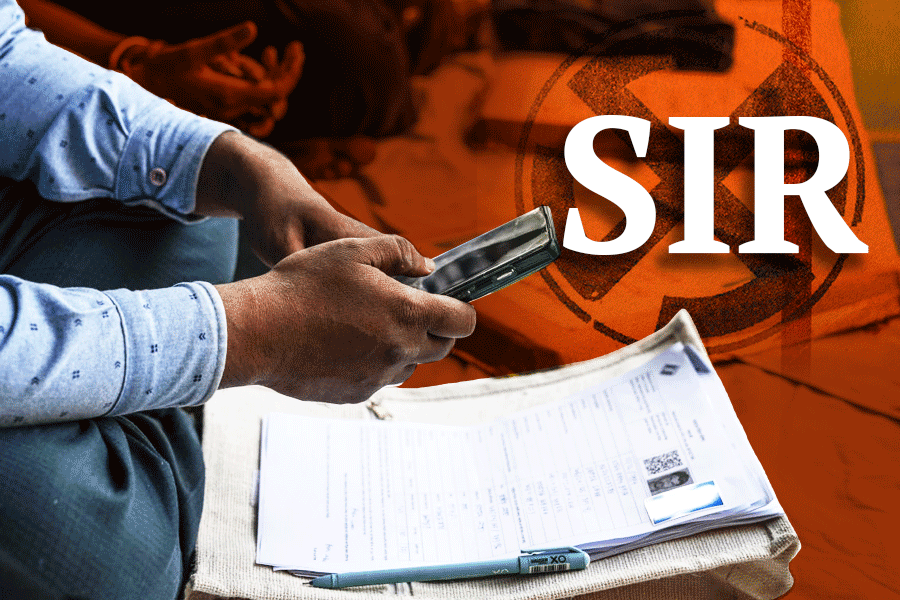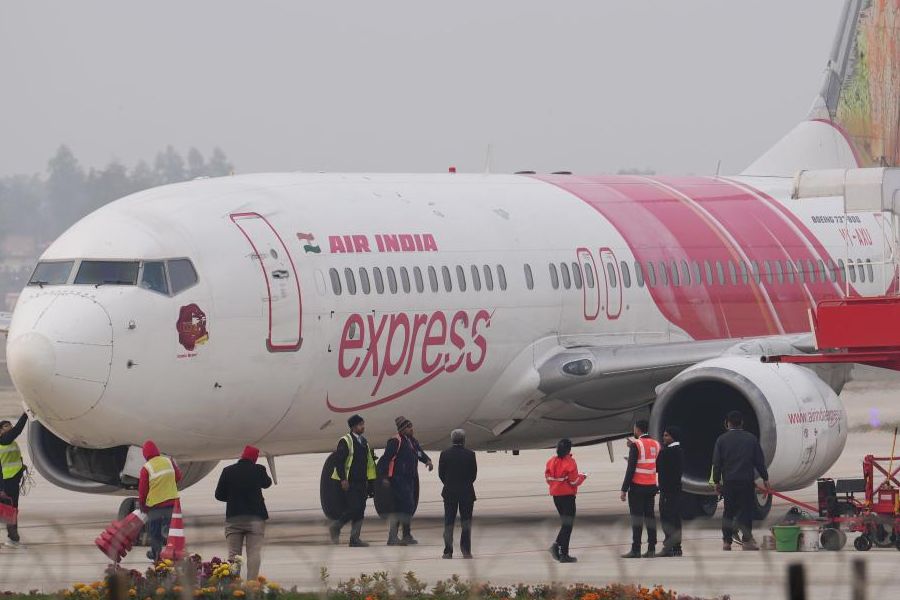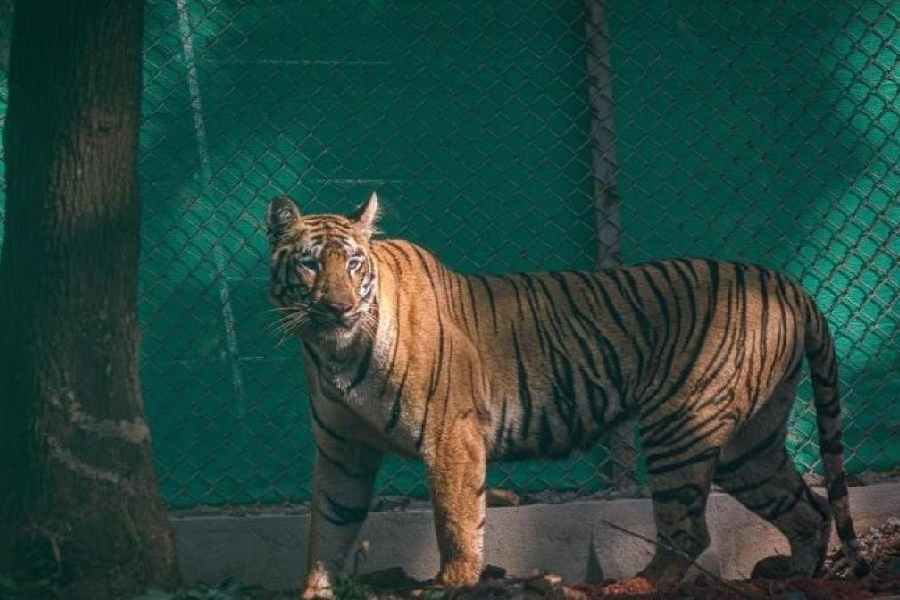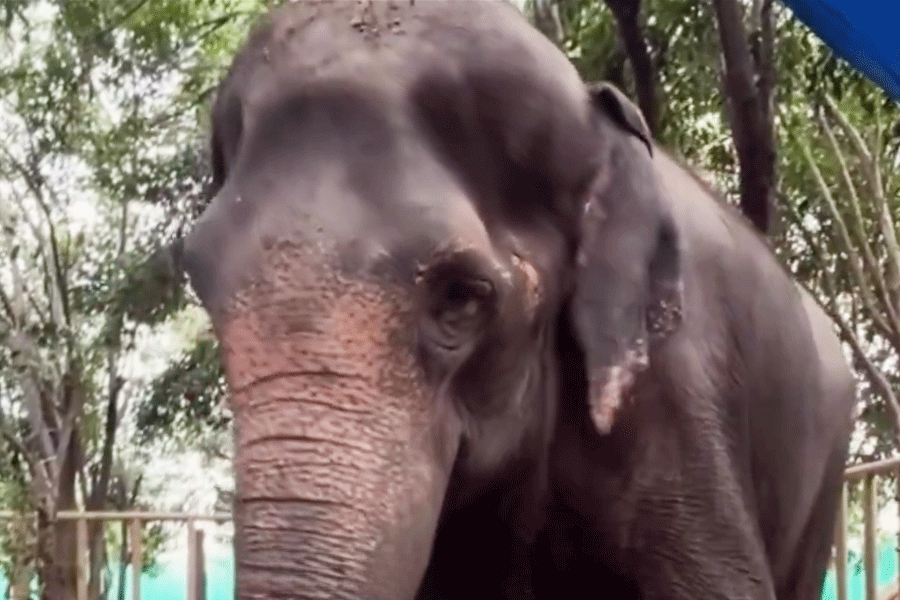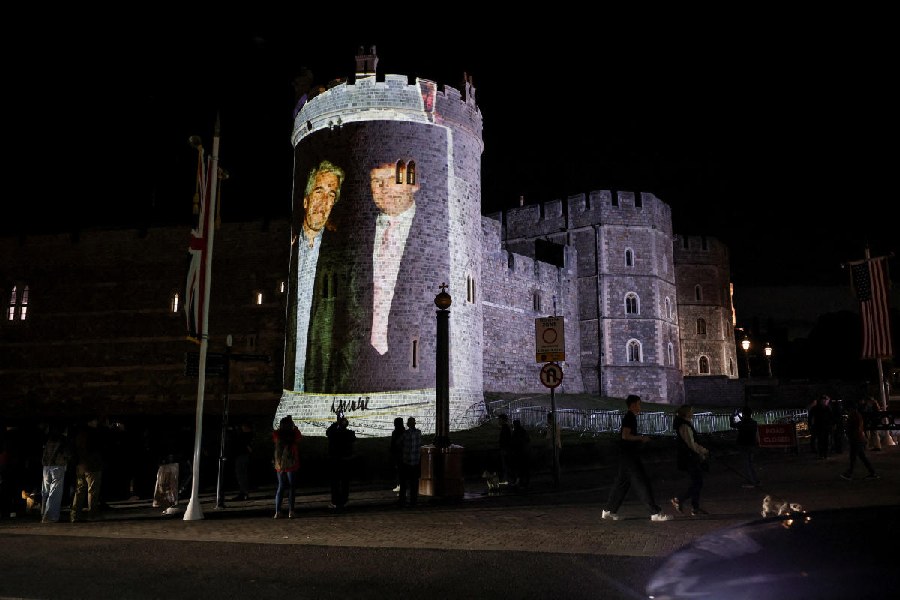From #TeenSaalBemisaal to #TeenSaalBuraHaal, the hashtags have begun to rain like confetti on the India-wide ModiFest the ruling Bharatiya Janata Party (BJP) is set to unveil. Say what you will about him, there's one thing Prime Minister Narendra Modi is never short of - notice, from those unembarrassed to rave about him to those unafraid to ravage him. From the time he was picked as the BJP's prime ministerial choice in 2013, Modi has remained the centre of the national discourse - the man who has set, through acts of commission and noticeable omission, the debate over where India is, or should be, headed.
Modi rode to power on the most stunning Indian campaign in living memory - 5,827 events including massive rallies, roadshows, townhalls, hologram and " chai pe charcha" apprearances, an extravaganza of energy, innovation and rhetoric that was often divisive and often downright unfounded. But through all of that ran a promise that probably best captured the public imagination, the promise of "Achchhe Din".
Into the second half of his term his popularity ratings remain high. The BJP has won election after election and grabbed new bits of geography. The Opposition remains tattered, or localised. He bungled his most radical move - demonetisation - but he can still claim credit for the highest ever foreign direct investment (FDI) inflows; the stock markets are popping the bubbly, and Indian industry, as is its wont, has been applauding Modi's every move.
But are things as rosy as often made out to be by the government and its strong social media message multipliers? The economy, despite the 7-odd per cent gross domestic product (GDP) growth claim, simply doesn't feel like it is growing at that rate; jobs have dried to a trickle in the organised sector; much publicised initiatives like the Make in India, Digital India and Skill India are yet to take off. Entrepreneurs, small and big, are not approaching banks for loans and farm sector distress is palpable across the country. Internal security is a shaken wing of government, Kashmir is on the boil a second consecutive summer, sectarian violence, led by empowered Hindutva vigilantes, is spiking, the border with Pakistan is volatile as probably never before. The Telegraph puts a few key areas of governance under the scanner:
ECONOMY: Growth, where are you? The demonetisation big bang has gone bust to widespread consensus, most of its purported objectives unfulfilled. The decision to change the base year in 2014 (from 2004-05 to 2011-12) to calculate the GDP pushed the growth rate to 7 per cent and more over the last two years, but the "7 per cent feel" has been missing from our lives, it's a number with little resonance. Credit growth, a clear indication of industrial activity, has been lowest in many years. People aren't ready to take risks. But that's a matter of time, some experts believe. "As far as the economy is concerned, the government has made stupendous efforts virtually on all the fronts," says Mukesh Butani, managing partner of BMR Legal. With the FDI rising and goods and services tax (GST) soon to become a reality, India will be on a high plane of growth, Butani predicts. But there is no palpable sense of that yet.
According to the Department of Industrial Policy and Promotion (DIPP), FDI from April 2014 to November 2016 recorded a growth of 54 per cent - from US $67.30 billion to US $103.43 billion - over the preceding period of 32 months (August 2011 to March 2014). According to HSBC's chief India economist, Pranjul Bhandari, the quality of FDI too has improved, moving from digital economy to the physical economy. In a research report, Bhandari says, "In particular, construction activity, electrical equipment, machinery, metallurgical industries, power and sea transport have seen the largest rise in 2016." In other words, these are job-creating investments. The Make in India initiative of the government may finally have something to show on the ground.
EMPLOYMENT: Naukri.not.com. Addressing a rally in Agra on November 13, 2013, Modi had bragged, "If the BJP comes to power, it will provide one crore jobs." The BJP, in fact, later promised two crore jobs per year. According to the government's own figures, it has barely scratched the surface. For a country that is estimated to add more than 12 million new people to the labour force every year, the employment generation has been alarmingly anaemic.
In the eight labour-intensive sectors, only 1.55 lakh new jobs were created in 2015. That rose to 2.31 lakh last year. On the other hand, the much maligned UPA-II's tenure saw 4.19 lakh new jobs in 2013 and 4.21 lakh new jobs in 2014. Skill India, a government initiative to train youth in various vocations, hasn't delivered the results it was designed for. "Ours has been a jobless growth economy and I suspect that this will get only worse in the next two years. The promise of two crore jobs per year was nothing but rhetoric," says Kris Lakshmikanth, chief of executive search firm Head Hunters India. Lakshmikanth predicts that the information technology (IT) industry alone could shed about six lakh workers in the next three years, a huge setback.
RURAL DISTRESS: Imperfect present, future tense. For the last three years, the annual agricultural growth has been stuck at an abysmal 1.7 per cent, almost half of what it was during the last three years of the UPA-II. Widespread drought conditions across the country in 2014 and 2015 didn't help matters; farmers' suicides shot up. It's an unfolding tragedy. The Modi government also quietly shelved the election promise that the minimum support price (MSP) given to farmers would be 50 per cent above their input costs. "If it was implementable, the UPA would have done it a long time back. This government has realised that it is economically unviable," says Ashok Gulati, agriculture expert and member of the erstwhile Planning Commission. Now the government is talking of doubling the farmers' income in five years. "It is nothing but another jumla," Gulati laughs. The government in this year's Budget has allocated more money for irrigation projects and is encouraging farmers to enrol in the insurance scheme for crops. Both these are said to be "game changers".
But the early signs are not very encouraging, at least, not on the Pradhan Mantri Fasal Bima Yojana. For instance, it came to light that last year the Uttar Pradesh and the central governments failed to pay their share of premiums as part of the scheme. On the positive side, if the normal monsoon forecast holds this year, it could provide some relief to the farmers. But little credit to Modi sarkar for that.
SOCIAL DISCORD: "Nationalists" and "Anti-Nationals". An air of social unease and disharmony hangs overhead, pumped, in the main, by emboldened Hindutva vigilantes and a new brand of "nationalists" that put a daily premium of proving loyalty to the flag and Bharat Mata. History, medieval and contemporary, is being rashly rewritten to suit new purposes. Hindu vigilante and obscurantist groups of all shapes and sizes have cropped up in several parts of the country. They have killed rationalists, lynched and flogged those suspected to have consumed beef or smuggled cows, assaulted students for opposing government policy and forced citizens, against their will, to cry support for an ultra-nationalist political creed they rightfully oppose. The government itself may have set the tone for this with its harsh crackdown on the JNU student protests. The duty of handing over "anti-national" certificates has been taken over by the "nationalist" trolls on the social media. Many of them are bellicose and abusive - and followed by the leading lights of the government, Prime Minister Modi included. India, probably, has never been so divided and bitter.
It is the minorities who have been at the receiving end of the vigilante and troll armies. It began with the creation of a "Hindu Helpline" in late 2014 to tackle "love jihad". Later, "beef" politics took over with the lynching of 50-year-old Mohammad Akhlaq in September 2015. Since then, many Dalits and Muslims have been lynched by self-appointed " gau rakshaks" on the suspicion that they were carrying cattle for slaughter. Many of those convicted, or chargesheeted, for sectarian violence and terror have been let out on bail. It is common for those violating the law in the name of "protecting Hindu rights" to either go scot-free or be booked under easily bailable sections.
INTERNAL AND EXTERNAL SECURITY: Vocal brawn, vocal blame. According to figures of the ministry of home affairs, terror attacks in Kashmir rose from 170 in 2013 to 305 in 2016 (until November). The violence took a heavy toll on security forces - 71 killed, 208 injured, the highest in recent years. Whether it was the terror attack on the Pathankot IAF base in January last year resulting in the death of eight people, or the Pampore, Uri and Nagrota attacks that resulted in the deaths of several army personnel, the government is yet to get a handle on the security situation, experts say.
"The internal security situation has definitely deteriorated. There is a lot of talk but very little action on the ground," says defence analyst Major General Ashok Mehta. Maoist strikes saw a small decline last year, but the recent attack near Sukma in Chhattisgarh in which 25 CRPF jawans were killed doesn't speak well for a government that constantly flexes its security muscle. The Modi campaign was merciless on the UPA-era security lapses; the vogue today is to blame failure on "liberals and anti-nationals".
The Modi government had promised a muscular policy against China and Pakistan. But it may not have sent the right signals to the armed forces by having a part-time defence minister twice in a span of three years, Mehta says. He also points to a recent lecture by the army chief, General Bipin Rawat, to a think tank in which he said that India was very parsimonious when it came to spending on defence.
"The defence budget is only 1.63 per cent of our GDP. I think this is the lowest since the 1962 war with China. The armed forces don't have the money for modernisation," Mehta says.
DIGITAL INDIA: Abki baar, App Sarkar A mobile app for almost every government initiative has been the mantra of the government. And the government has so far come up with scores of them. One of the most successful has been the BHIM app, a unified payment interface for making mobile digital payments, with about 10 million downloads on Android mobile phones. What about the others that were launched with much fanfare? The Kisaan Suvidha app for the farmers with information on weather, crops and other issues has seen only one lakh downloads. India has 120 million or so farmers. A few other farmer-related apps haven't touched even 10,000-download level. Meri Sadak, a much publicised citizen feedback app for people residing in the Pradhan Mantri Gram Sadak Yojana (PMGSY) villages, has seen only about five lakh downloads. There are more than 1.5 lakh PMGSY villages in the country.
You shall, of course, find none of this if you were to go to that most lavishly launched app of all - the Narendra Modi app. There, in all its virtual splendour, reigns achchhe din.
.jpg)

![]()
The Modi government has made several
Tweeting on April 8, 2014, Modi said, “On Aadhaar, neither the Team that I met nor PM could answer my Qs on security threat it can pose. There is no vision, only political gimmick.”
In Power:
In perhaps its biggest policy reversal, the Modi government is on an overdrive to make Aadhaar compulsory in the face of strong leakage and privacy-invasion arguments
2012: Narendra Modi had changed his display picture on Twitter to black against the contentious Section 66A of the
Information Technology Act, which sought to empower the government to arrest anyone posting what it considered an ‘offensive’ comment online
In Power:
The Modi government defended the section in the Supreme Court in 2015. But it was struck down by the apex court
2013: The BJP strongly opposed the land swap deal known as Land Boundary Agreement (LBA) with Bangladesh on the plea it would compromise India’s territorial integrity
In Power:
The Modi government mooted the LBA Amendment Bill in Parliament and had it passed
2011: BJP slammed the UPA government’s plan to introduce the Goods and Services Tax Bill in Parliament. As Gujarat CM, Modi was one of GST’s staunchest critics
In Power:
BJP pilots GST as an idea whose time has come, repeatedly deplores the Opposition for being obstructionist in Parliament, eventually brings it round to make GST a reality
January, 2014: Manmohan Singh blames Comptroller and Auditor General (CAG) for slowing down economic growth. The BJP condemns it as an attack against constitutional authority
In Power:
Union finance minister Arun Jaitley asks CAG not to sensationalise findings. Modi government says CAG reports should not be given overdue importance
Launches a shrill campaign against the ‘baap-beti’ (Mufti Mohammed Sayeed and Mehbooba Mufti) combine of the PDP during the Jammu and Kashmir Assembly contest
Upon the declaration of results
Joins hands with the Mufti, and later Mehbooba, to secure, for the first time, a toehold on power in the state
During his campaign for 2014, Modi repeatedlyadopts a bellicose stand against Pakistan, saying talks cannot be held amidst the sounds of ‘bombs and explosions’. The NDA government cancels foreign secretary level talks with Pakistan after Pakistan high commissioner Basit Ali meets separatist leader Shabbir Shah
Later
Modi invites his Pakistani counterpart Nawaz Sharif for his inaugural. Follows that with an unscheduled stopover at Lahore to meet Nawaz Sharif. India-Pak are back to daggers drawn.

.jpg)
